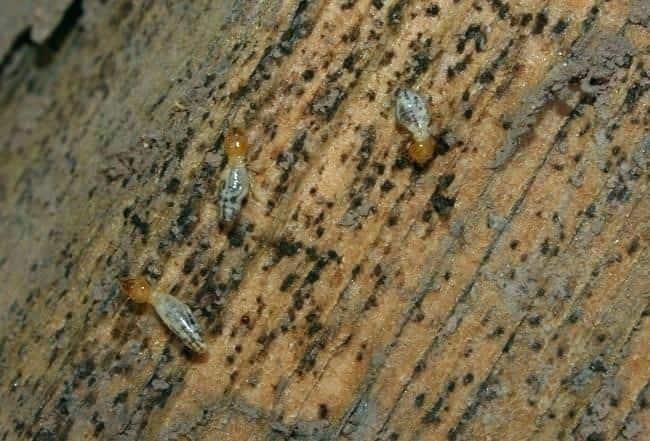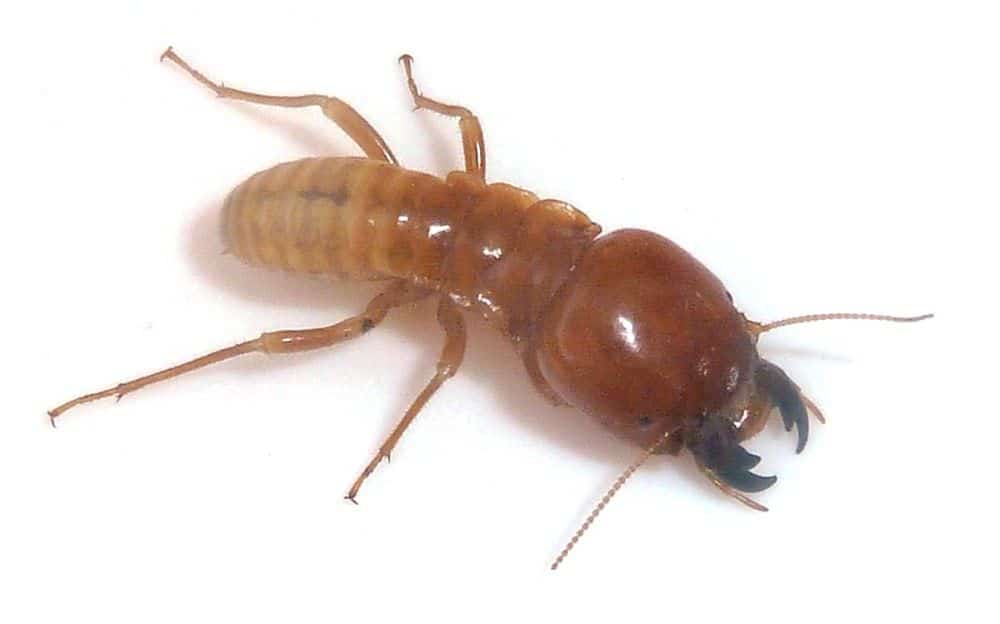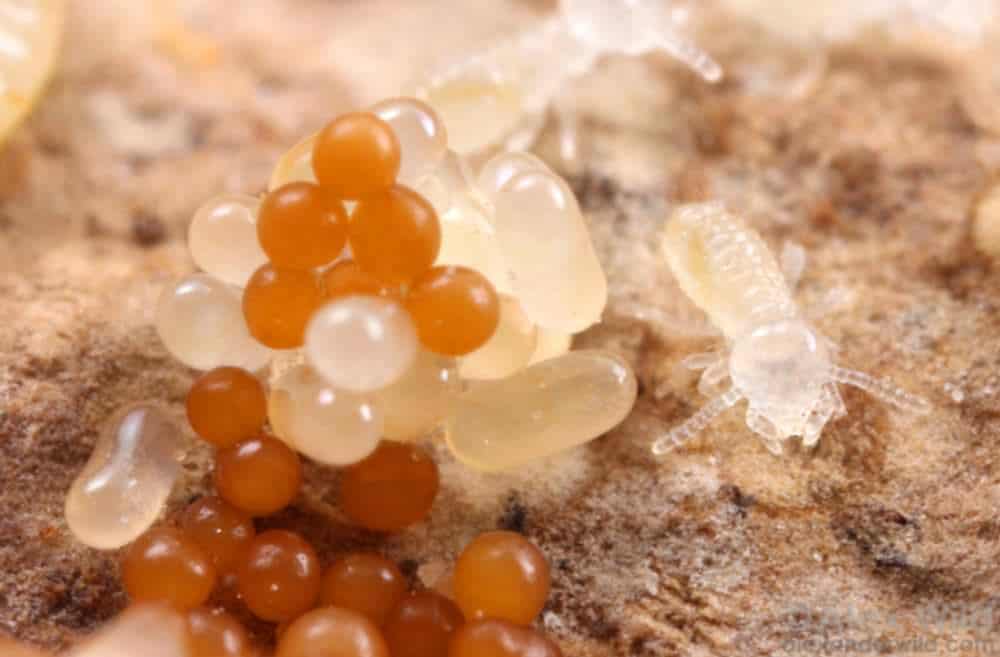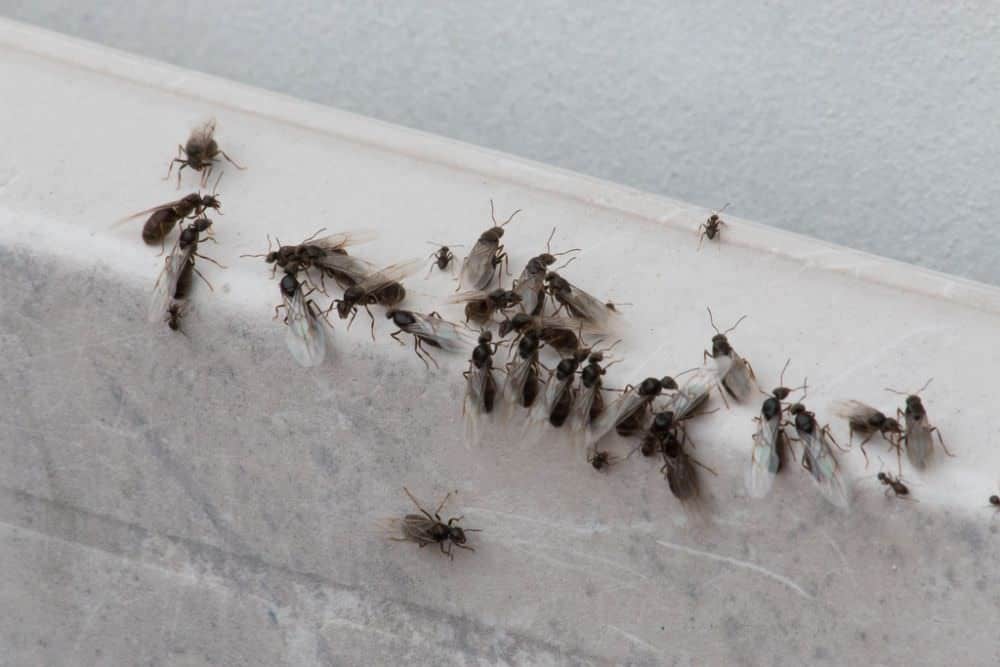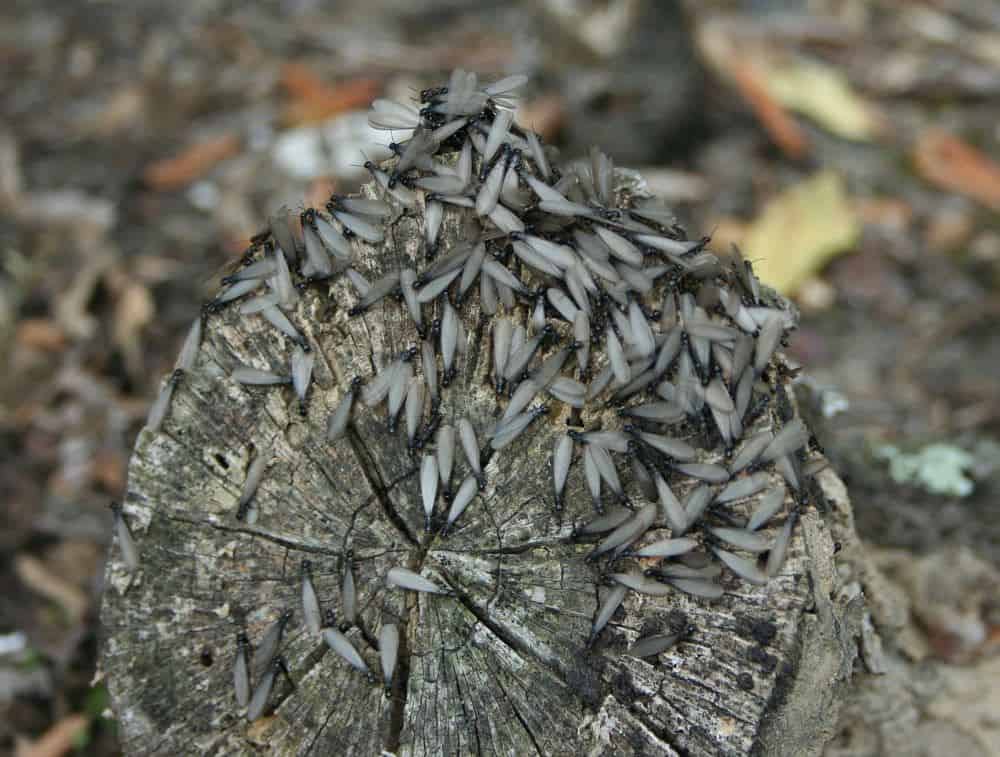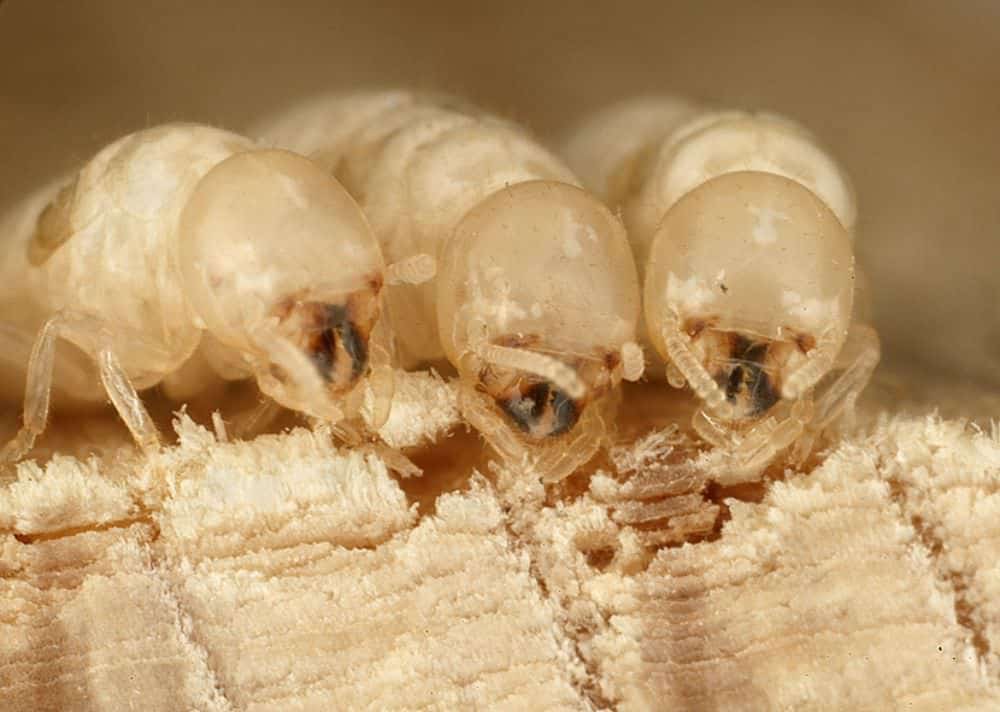Insects & Bugs That Look Like Termites
There are around 2,000 termite species in the world and some of them can cause quite a lot of damage. If we see bugs in our home that we think might be termites, this doesn’t necessarily have to be a cause for panic.
It can be easy to confuse them with other bugs, especially certain types of ants. There are insects that actually behave like termites too. In order to know what you are dealing with, let’s take a look at some other insects which look very similar to termites.
Carpenter Ants
Ants are often mistaken for termites, but they do have some differences in appearance. Carpenter ants have two body parts; the thorax and the abdomen. The small section between these two parts is pinched, making it easy to distinguish between the parts. Termites, on the other hand, have one long body. The thorax is short while the abdomen is long and a bit thicker.
While both ants and termites have antennae, these differ as well. Termites have straight antennae while the ants’ are bent in the middle. Termites and carpenter ants both have two sets of wings. The termite’s wings are equally long while the ant’s front wings are longer than the rear. Some termite species will also shed their wings once they have found a place to nest, whereas ants don’t.
Carpenter ants are not only close to termites in appearance, but they’re also similar in behavior. Termites, of course, love to eat wood. They can destroy houses by feeding off of the walls, floors and any other wooden material.
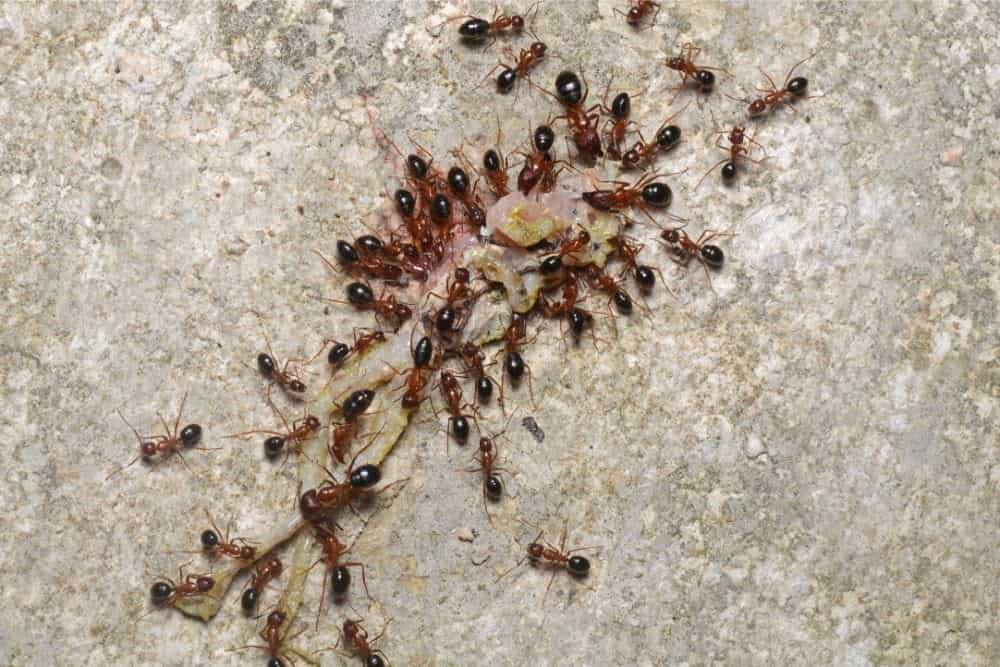
Carpenter ants live inside wood, where they will dig long tunnels using their mandibles. These ants prefer damp, dead wood. They also dig large holes in old trees and other decaying wood. Unlike termites, however, they do not eat the wood. The ants will push the waste, which looks similar to sawdust, out of their tunnels.
Carpenter ants like to feed on sweet substances, such as sugar, syrup, and honey. They also need some form of protein which they get by consuming other insects – dead or alive. Honeydew, produced by other aphid insects, is one of the most important parts of their diet. This sweet treat is what provides the ants with energy.
Acrobat Ants
Acrobat ants are similar in appearance to termites. These ants also like to hide out in old wood. Similar to the carpenter ants, they do not eat the wood. Acrobat ants are small in size, usually around ⅛ of an inch. They also have a segmented body, unlike the termites.
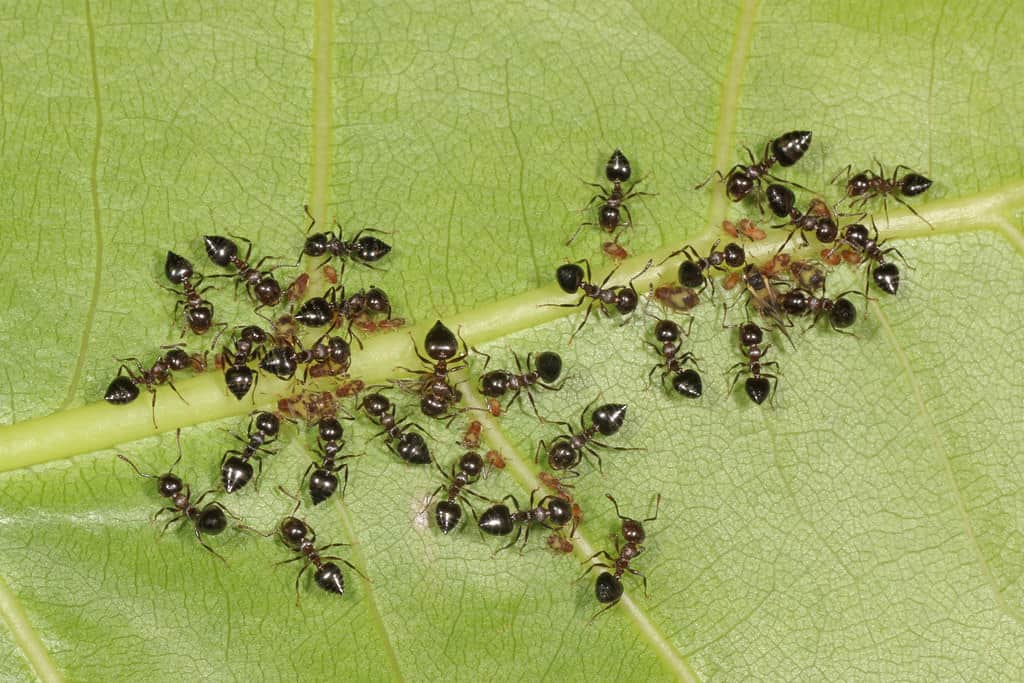
These ants are known to be able to raise their abdomen when threatened. Looking at the acrobat ants from above, their abdomen will appear to have a heart shape.
A telltale sign of infestation is finding trails of dirt or wood debris.
Acrobat ants have a diet similar to carpenter ants. They primarily feed on honeydew, but they also like to eat sweets and meat. They will also feed on live or dead insects, and termite swarmers are among their favorites.
Unlike termites, acrobat ants do not cause any significant damage to wooden structures. They do, however, like to remove the insulation within electrical wires, causing short circuits.
Flying Ants
The term “flying ants” is used to describe all ants that have wings, rather than a particular ant species. They are often mistaken for termites, due to the small size and similar-looking wings.
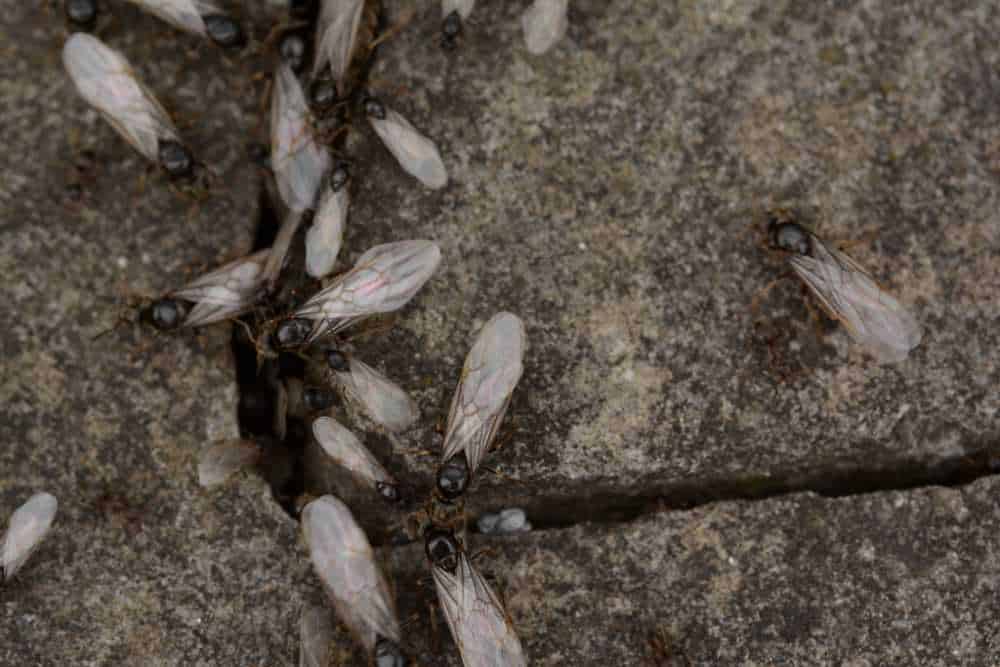
The carpenter ant is the most common flying ant you will find around your house, but it’s not the only one. Black garden, pavement, and moisture ants are also types of flying ant.
The breeding adults are the ants that fly most often. They use flight to find new mating partners.
Ants and termites may look similar, but there are a number of telltale differences. The easiest one to identify is the body shape, as I mentioned above. Ants are also darker in color, ranging from dark red to black.
Alternatively, termites are much lighter, ranging from transparent to light brown. The wings of the termites are equal sizes, the ant’s front wings are larger than the back ones. Finally, the antenna of the termite is straight, while the ant’s is bent.
Powderpost Beetles
Powderpost beetles look nothing like termites. I am including them here because the harm they cause is quite similar. This means that the damage is easily mistaken for a termite problem.
Powderpost beetles have an interesting body. Their thorax actually covers their head. This is because the head is downward facing, so the chest acts as a shield.
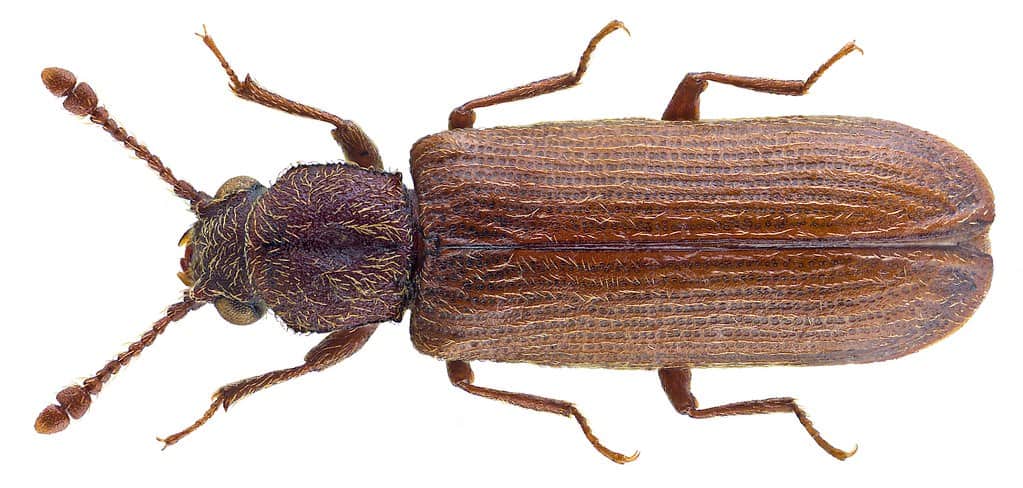
These beetles lay their eggs inside seasoned wood, where they mature, hatch and grow into larvae. They remain inside the wood all winter, where they are safe and warm. The larvae will feed on wood until springtime, when the young adults will come out.
Powderpost beetles are often discovered in rafters, stored lumber and even polished wood. These beetles will cause quite a lot of damage, similar to termites. They dig nests inside the lumber and will frequently stay in the infested area for several generations. This then destroys wood from the inside.
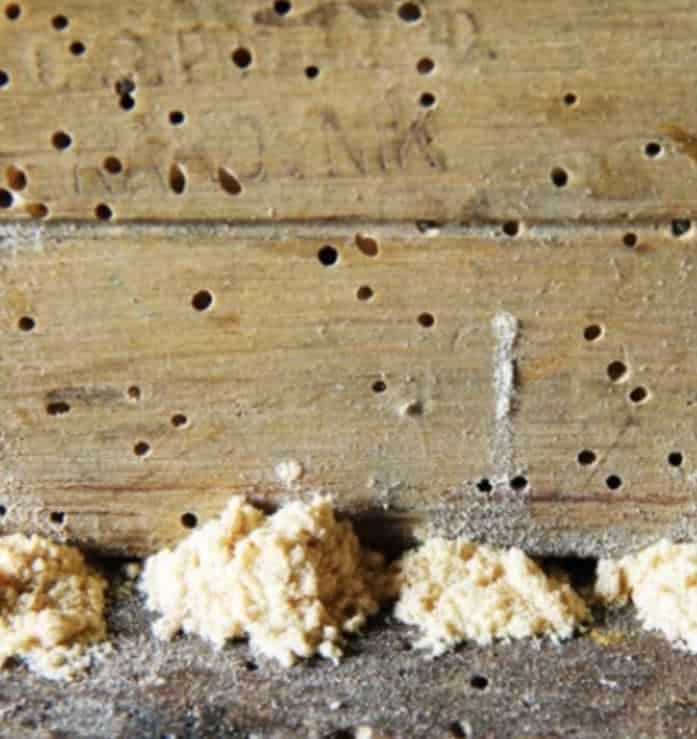
When determining whether the damage is caused by termites or beetles, look at the surrounding area. Termites and beetles both leave a type of residue called frass, which is a mixture of wood fragments and droppings. Termites will leave pellet-like feces with ridges on the edges. Beetles, on the other hand, will leave a dust-like residue.
Carpenter Bees
One insect that you may not associate with termites is the bee. Carpenter bees are very similar to bumblebees, except they have a shell instead of a hairy body. They also don’t have those signature bumblebee stripes.
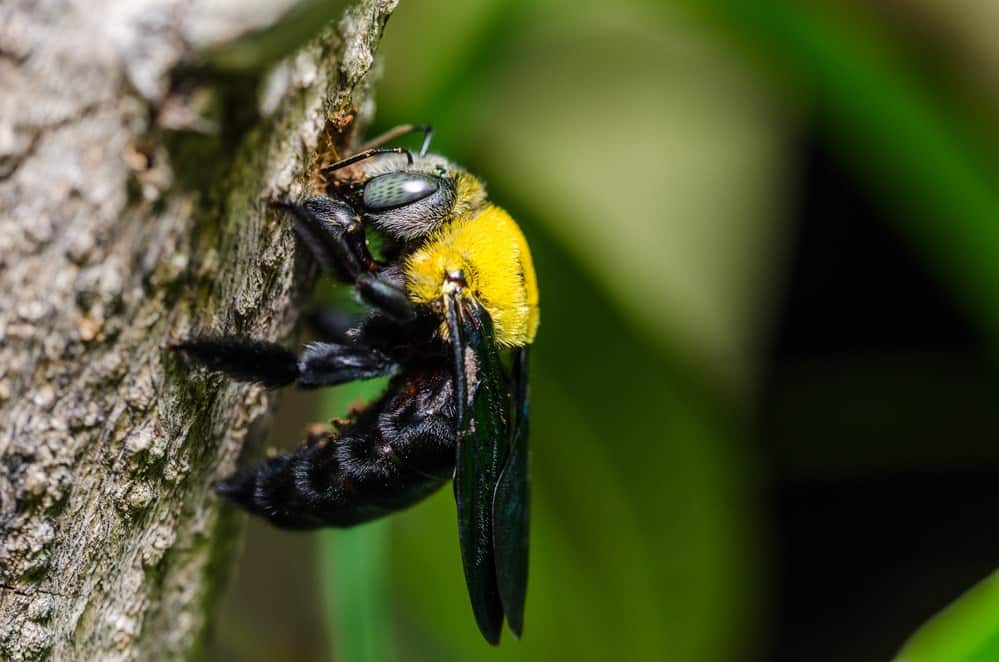
Carpenter bees like to dig long tunnels and nests inside wood, similar to carpenter ants and termites. The damage they cause can easily be mistaken for a termite problem. Carpenter bees, however, leave a perfectly round hole as the entrance to their tunnels. Coarse sawdust will also be present.
The female carpenter bees will often reuse old tunnels to lay their eggs. This can result in substantial damage to buildings as the wood becomes increasingly hollow.

